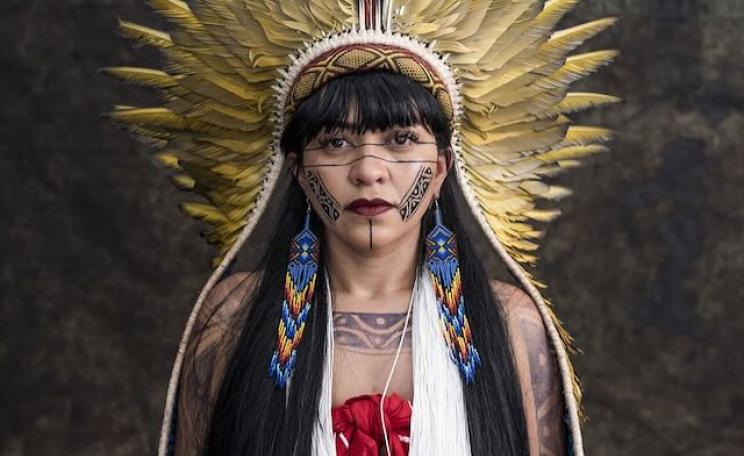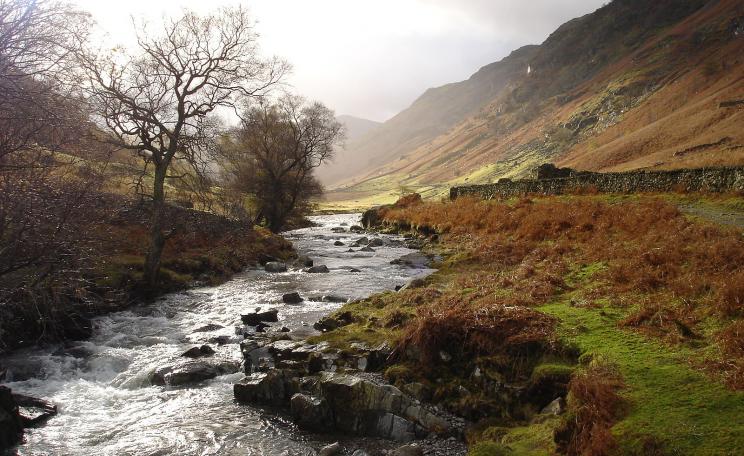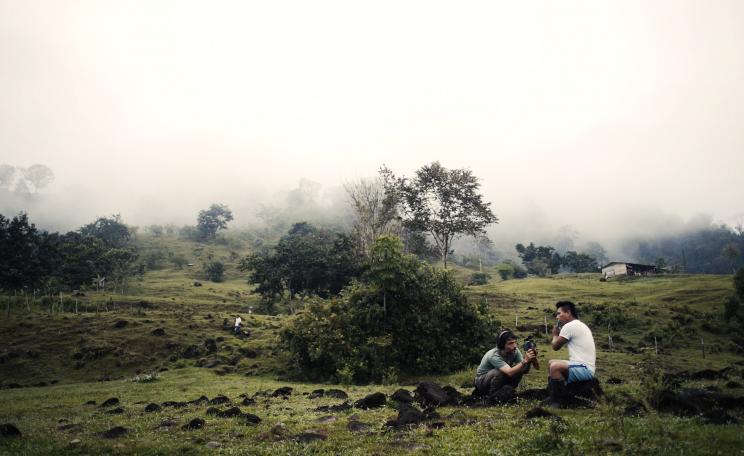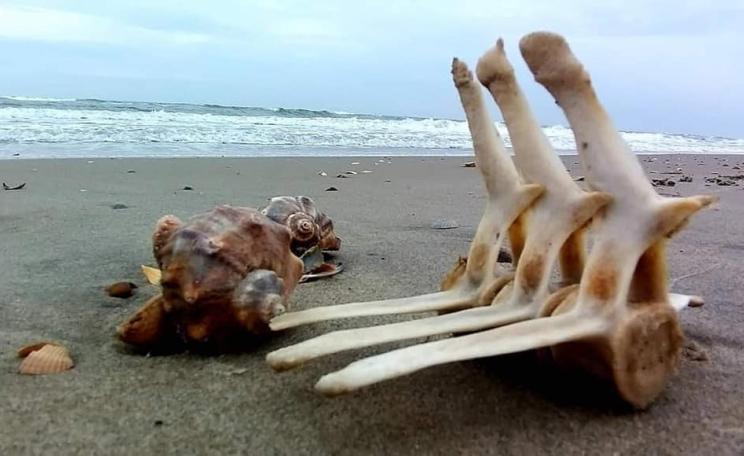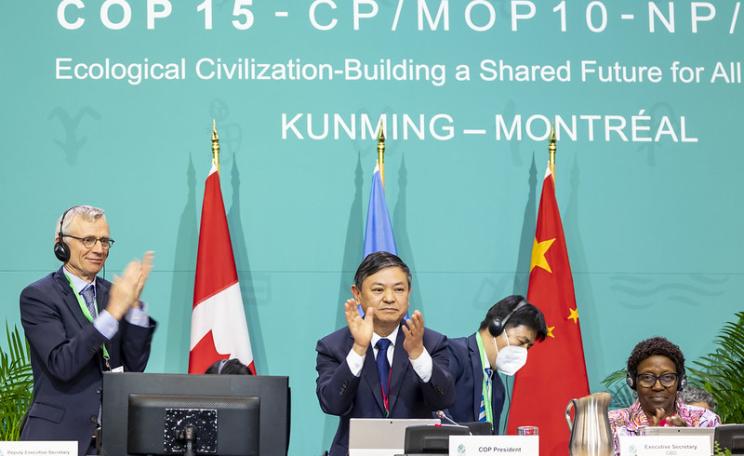There are many drivers to deforestation in the Amazon - in Colombia, Ecuador and Peru, we're talking about oil.
The fossil fuel industry is destroying ecosystems and the animals and plants that live within them in multiple lands across the world. Campaigners and indigenous peoples whose lands are threatened told their stories at COP15 biodiversity talks in Montreal.
In the Amazon and Congo basins, an area six times the size of the UK is threatened by expanding oil and gas extraction, with tens of millions of people from indigenous and local communities at risk.
Mapping and analysis in a report published at COP15 revealed that more than 135 million hectares of undisturbed tropical forest is already in production or under exploration by the oil and gas industries. More than 20 per cent of the total population in these regions now live in blocks of land designated for production and exploration by the fossil fuel industry.
Mangroves
Alicia Guzman, director of the Amazon program at campaign organisation Stand.earth, explained that two thirds of oil and gas exports from the Amazon rainforest go to the US. More than half the oil produced in the Amazon is exported to California, she added.
She said at a press conference at COP15: “The Amazon has reached its tipping point, meaning that it cannot regenerate itself. There are many drivers to deforestation in the Amazon - we can talk about leather in Brazil, but in Colombia, Ecuador and Peru, we're talking about oil. It’s legal because it’s driven by governments in oil and gas concessions.”
“Ecuador is the tiniest country in South America - we have less than two per cent of the Amazon and yet 52 per cent is an oil block - half of the Amazon in Ecuador,” she said. “In fact, we have the highest density of oil blocks in all of the Amazon - 89 per cent of all the Amazonian oil comes from my country.”
Harrison Nnoko, executive president at AJESH Cameroon, said he had visited affected sites in the Congo rainforest, and carried out independent monitoring.
“The situation for biodiversity is disastrous. Oil and gas expansion is deteriorating our primary forests, they are leaching carbon, the mangroves are also leaching carbon, they are degrading by the day, and are heavily polluted," he said.
This affected not just animals and plants, but also human health in an area where people lack access to medical care.
Tar sands
In Canada extraction of oil from tar sands in Northern Alberta has expanded to such an extent that the tailings ponds – bodies of sand and fluids holding the toxic waste from the extraction process – can be seen from space. The tailings store extremely toxic chemicals, including high concentrations of dangerous naphthenic acids.
Since the first oil sands project in 1967, the increase in the number and size of tailings has been momentous. As of 2020, there are 30 active tailings ponds across nine oil sands projects covering over 300 km2 of the boreal forest.
There are many drivers to deforestation in the Amazon - in Colombia, Ecuador and Peru, we're talking about oil.
They are located close to the Athabasca River - one of Canada’s major rivers that flows through Alberta and the Northwest Territories to eventually join the Mackenzie River, which empties into the Arctic Ocean.
Currently, the release of toxic substances into water containing fish is prohibited by law in Canada.
But the government, at the request of oil companies, is currently considering regulations that could allow the release of partially treated tailings into the Athabasca River, according to Aliénor Rougeot, climate and energy program manager at Canadian campaign group Environmental Defence.
Indigenous
Paul Belanger, science lead for non-profit campaign group Keepers of the Water, explained that tailings are very difficult to treat, and latest results from a pilot project carried out by oil companies has shown that at least three heavy metals remain at high levels following treatment.
“There is a high level of salts and toxic acids, and because of leftover ammonia in the treated material, there’s algae and no oxygen. It would be frightening just to consider that discharged into the river,” he said.
This pollution would add to the cumulative impacts caused by the tailings ponds over the past 40 years, which include pollution of air, groundwater, wildlife with tumours, and birds dying after landing on the tailings, he said.
The Canadian government’s department for Environment and Climate Change said that allowing treated effluent into rivers was one of several options being considered. “Any such regulations would be developed with strict protective standards reflecting the best available scientific information and Indigenous knowledge.”
A working group including nine Indigenous communities is to publish a discussion paper and consultation later this year, it added.
Pipeline
Another example came from the Great Lakes region, which lies partly in both Canada and the US, where indigenous peoples are facing the threat of pollution from a 70-year-old oil pipeline named Line 5 that transects the lakes. The Great Lakes hold more than 80 per cent of North America’s freshwater.
The pipeline is in a state of ill repair, has had several safety violations occur and has leaked at least 33 times, spilling over 4.5 million litres of oil into surrounding lands and waters. Campaigners from indigenous communities, Environmental Defence and US campaigners the Sierra Club spoke of their fear of an even greater leak, as the infrastructure ages beyond its originally permitted lifespan.
Michelle Woodhouse, water program manager from Environmental Defence told media at COP15: “Experts have said this pipeline lies in the worst possible place in the world for an oil spill to occur - in the heart of the world's largest freshwater system, a source of drinking water for over 40 million Great Lakes residents, and home to over 4000 species of plants, fish and wildlife.
"This is an ecological disaster in the making,” she said.
Line 5 operator Enbridge did not respond to a request for comment.
This Author
Catherine Early is a freelance environmental journalist and chief reporter for the Ecologist. She tweets at @Cat_Early76.


